
We’ve been working with PCIe Gen 4 drives since 2017. Gen 5 came along in 2019, but the pandemic caused widespread production problems with electronics, delaying widespread adoption of the new standard. Gen 5 literally doubled the lane width of its predecessor from 16 GT/s to 32 GT/s per lane, but there aren’t many manufacturers able to make use of that with new devices like video cards and SSDs.
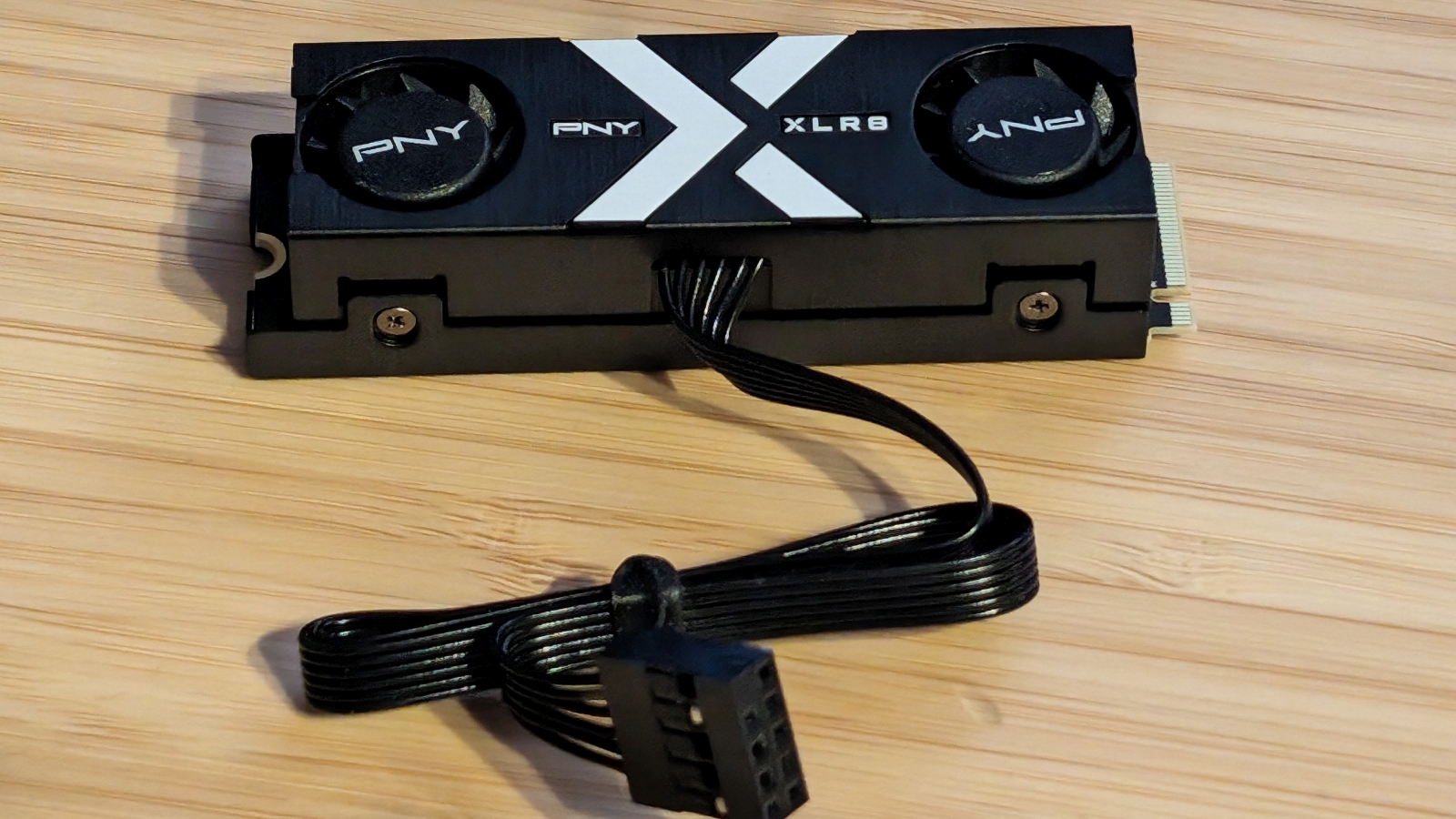
Fast forward to 2024 and we’ve gotten the first Gen 5 drives to test. PNY’s new SSD, the CS3150, advertises performance of up to 11,500MB/s read and 8,500MB/s write speeds. Could this be the next evolutionary step for SSD? If we can trust what we see on the box, it’s a massive leap. Time to strap in and take it for a spin.
Unboxing the CS3150, the first thing you’ll notice is that the drive has a heatsink with two small fans on it – welcome to the age of active cooling. The drive is rated for 3.3 volts at 3.6 amps, and at max speed, is likely going to start to push some real heat. These tiny fans, combined with a pre-installed solid block heatsink and a thermal pad should keep it around the operating temperature of 70°C. The maximum is 85°C, so we’ll need to take a few measurements to ensure we aren’t running into thermal throttling over heavy usage.
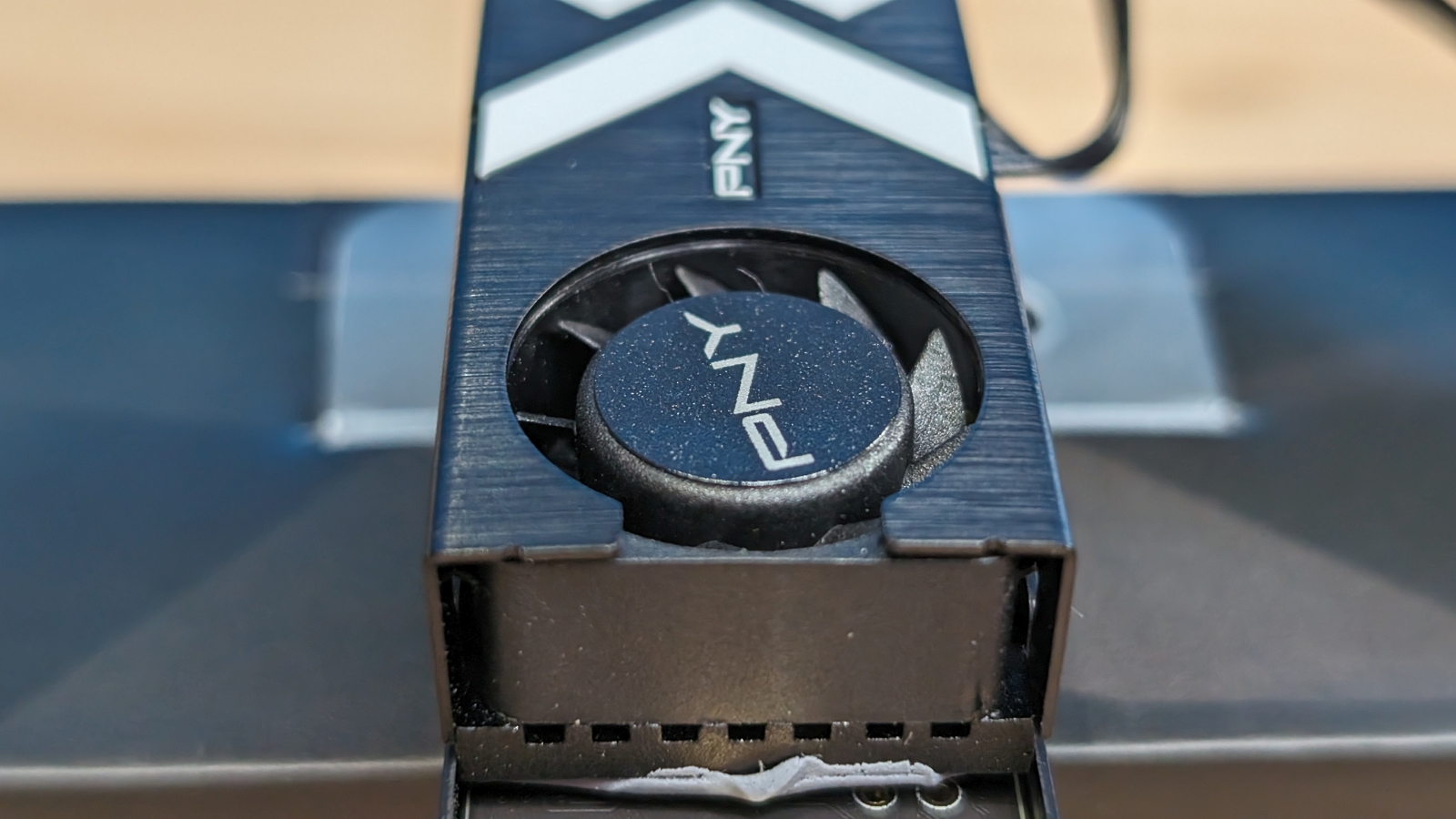
Under the hood, this drive is a PCIe Gen5 x4, with a M.2 2280 form factor, and powered by a Phison E26 controller. It also has 4GB of Hynix LPDDR4-4266 DRAM. To maximize the flash cell density, PNY went with a triple-level cell (TLC) NAND flash memory at 232 layers from Micron. As usual, it’s a well-built chip from high-quality components across the board – something we’ll see reflected in the benchmarks.
The power draw on the CS3150 is between 4.9 and 6.5W at any given moment. The maximum I saw it hit was just over 10W, which is unsurprising. Just like recently released GPUs, we’re seeing power consumption climb commensurate with performance, and NVMe are no exception.
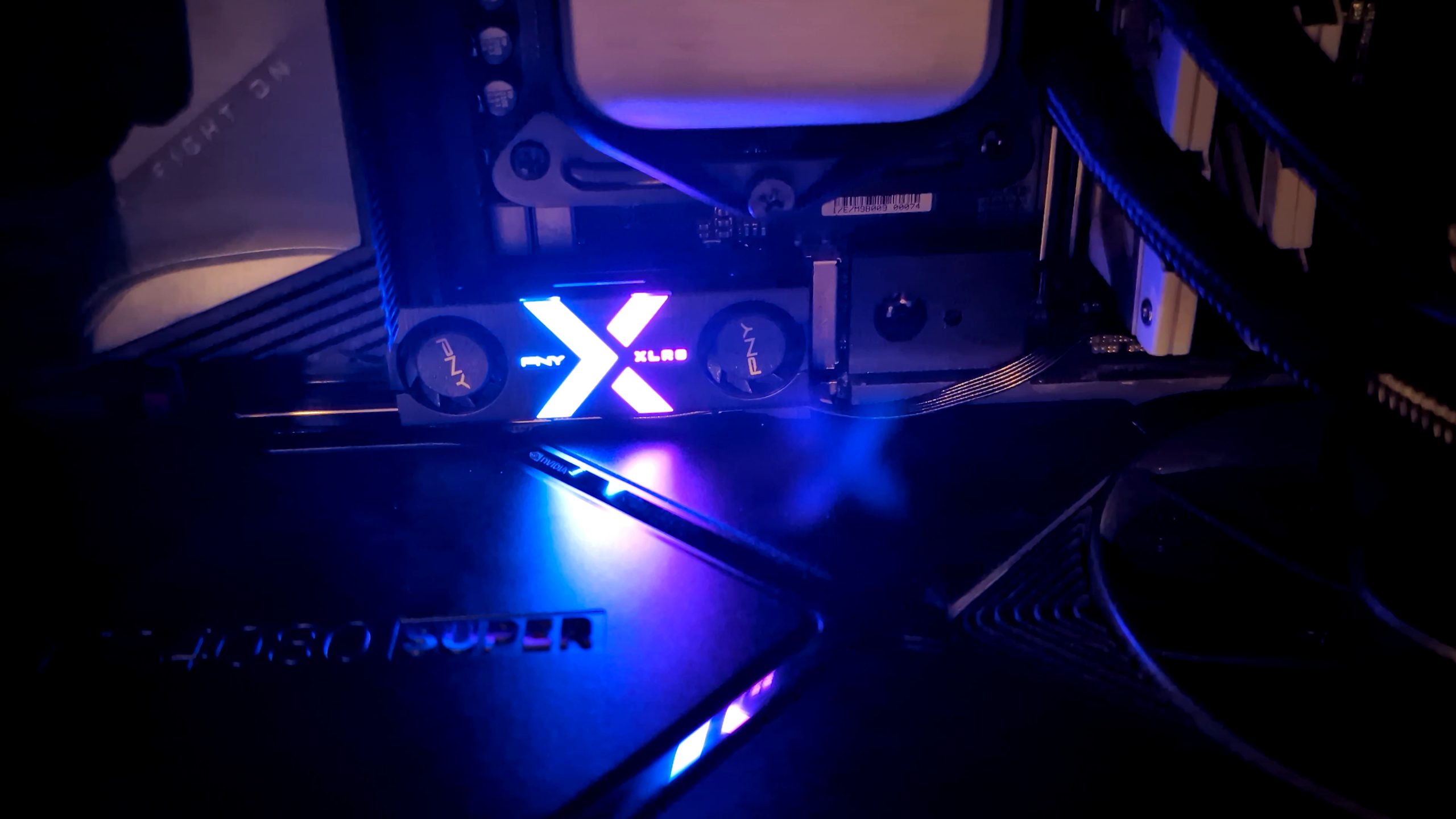
This is the first drive I’ve seen with a need for active cooling. The two fans are powered by a cable to be connected to an open 9-pin USB header – not to worry, you likely have quite a few open and doing nothing. Just like a good GPU, the fans only kick on when needed, and the only time I saw that occur was during very heavy benchmarking or when I was actively gaming. Measurements showed temperatures hovering around 60°C (the top of the range is 85°C), meaning the active cooling is working remarkably well.
Because this drive isn’t sitting underneath a cooling plate, and because it has power, PNY knew what to do next. The X and the words “PNY XLR8” that adorn the top of the CS3150 are both fully loaded with RGB lighting, pulsing and glowing. You can use the PNY Velocity-X software to control the characteristics of the RGB to match the rest of your in-case lightshow, if you are so inclined.
The test platform I use in the lab is current – a Gigabyte Z790 Aorus Elite with an Intel 13900K and an RTX 4080 Super – more than enough to handle anything current and likely well into the future. Despite that, when I connected up the CS3150 I was shocked at the benchmarks. Take a look.


Something was clearly wrong as the drive was operating at half the rated speed. It’s normal for a drive to not hit maximums as those are theoreticals, but are never this far off. Something had to be wrong. I plumbed the depths of Windows and checked all of my settings but I simply couldn’t find a solution. I turned to the manufacturer and walked through a BIOS update to the current Beta update.
I’ve had the BIOS add to stability or compatibility, but in over 20 years of testing I’ve never had it affect speed. A setting within the BIOS, sure, but the firmware revision has never been the thing that suddenly uncorks performance. Until today. Grabbing a beta firmware update for the board and loading it saw the CS3150 take off like a racehorse on fire on a rocket sled and juggling chainsaws. Re-running all of my testing I was dumbfounded at the blistering performance. Check it out:
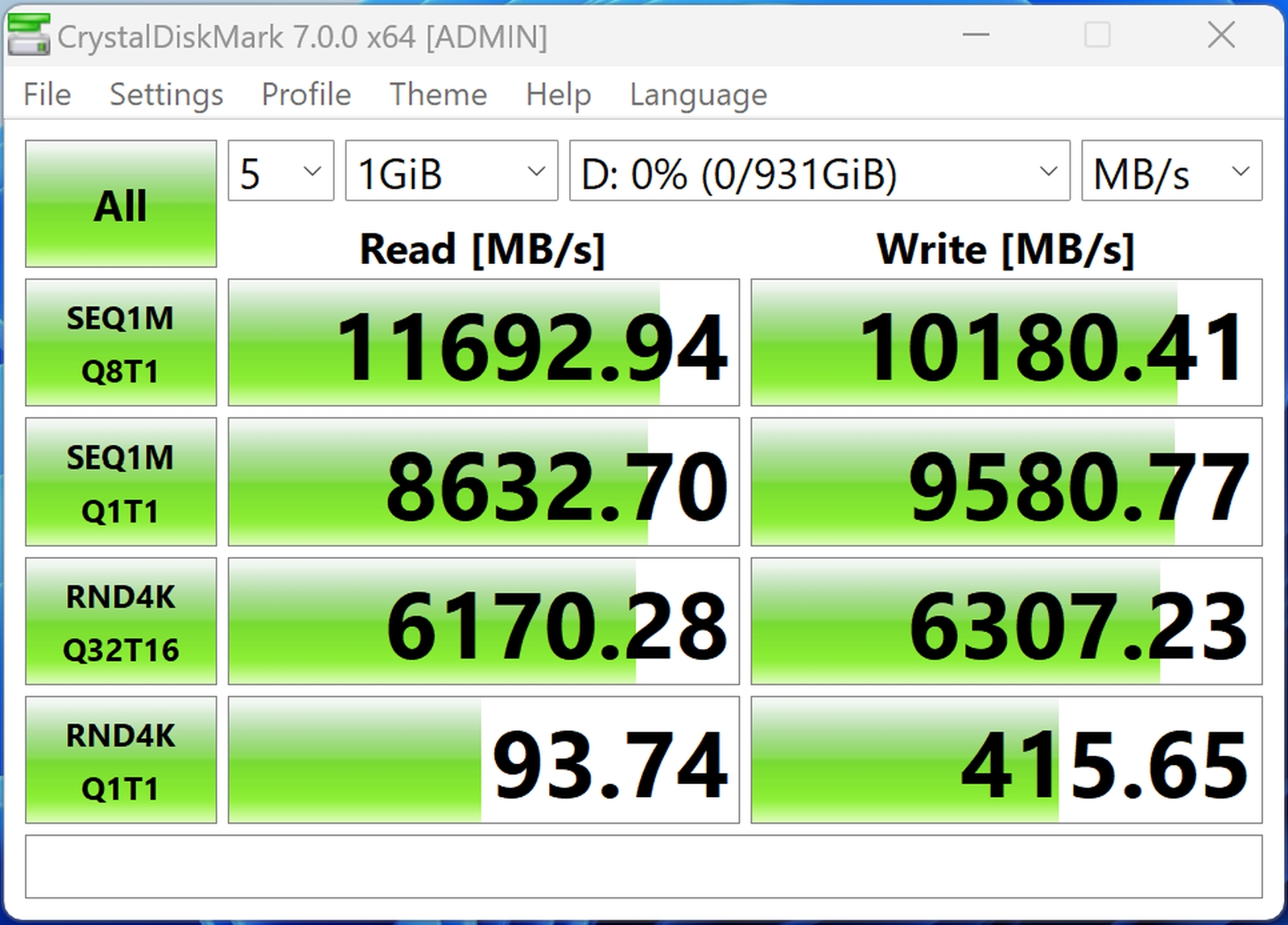
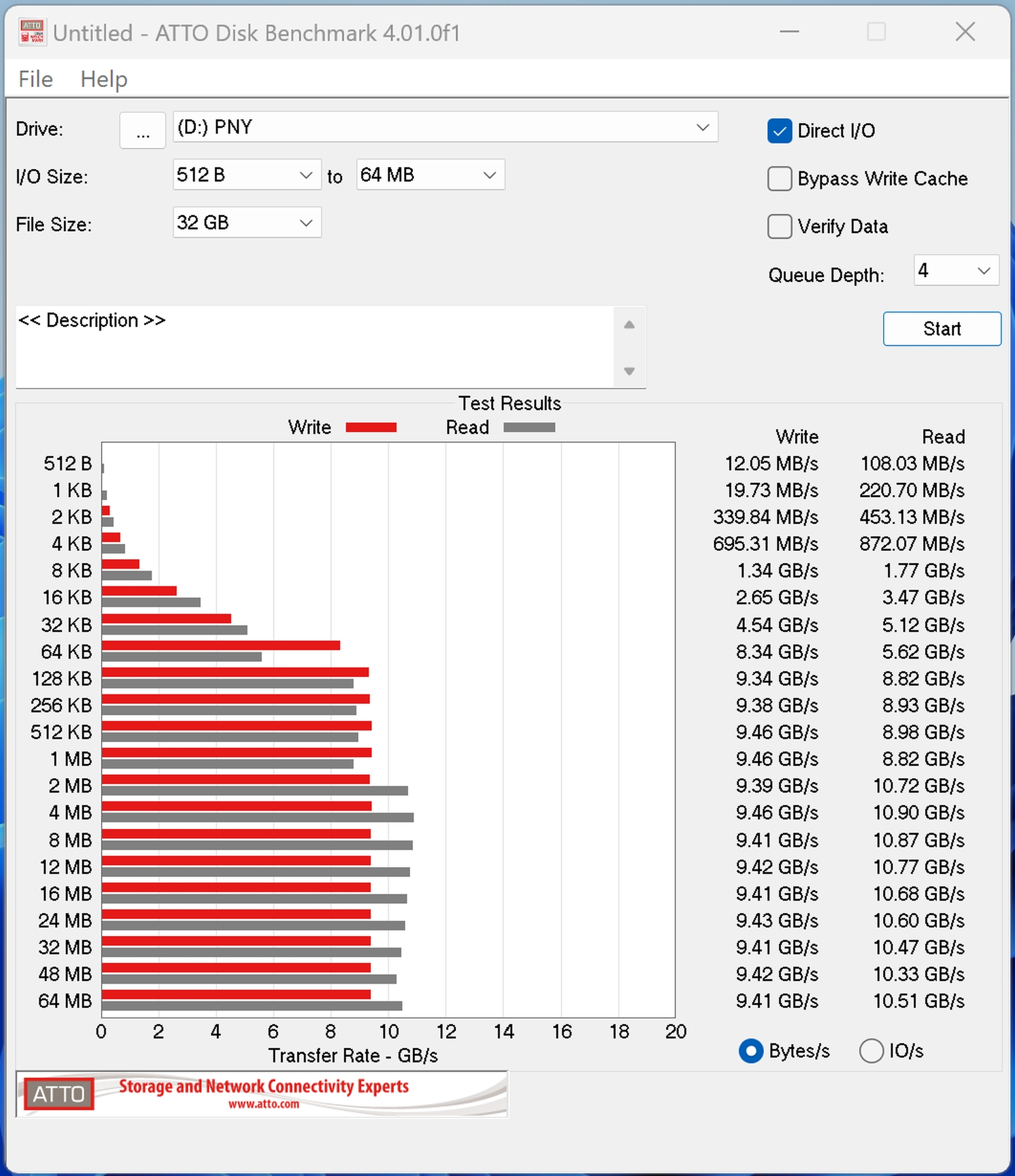
Crystal Diskmark is great for theoretical maximums and to check the claims on the box. You’ll recall that this drive is rated for 11,500 Read and 8500 write, and as you can see above, those write numbers were very conservative.

Re-running ATTO we saw the same numbers as we did with Crystal Diskmark, but longitudinally across a variety of ever-increasing block sizes. Once you reach files around 64 KB in size you see incredibly consistent results that carry all the way down the line. Next on the list was a run of 3DMark.
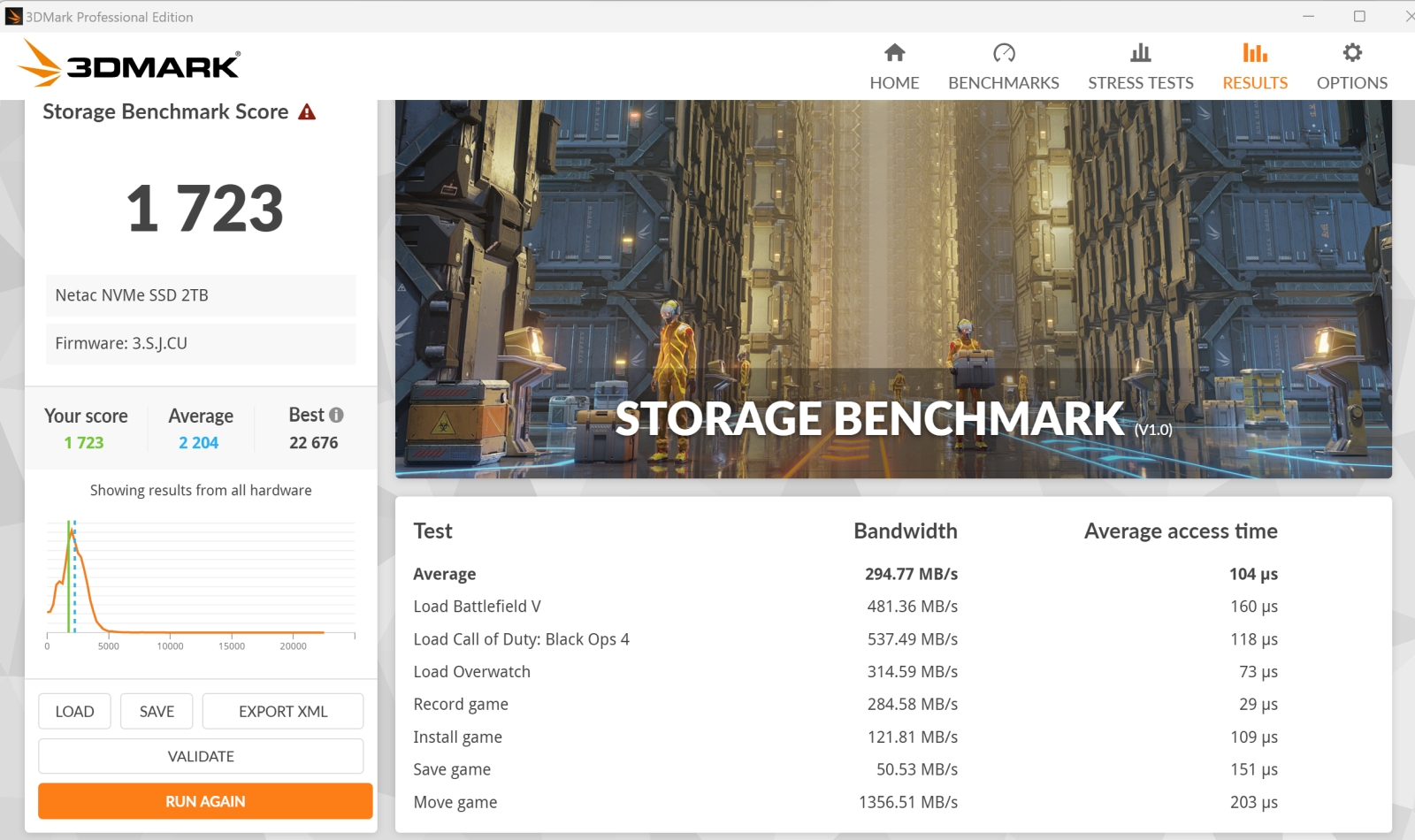
By way of comparison, a recent top-tier Gen4 drive results were just less than ⅓ of the speed of this drive. Below is that drive for comparison to the PNY CS3150 above.
In practical terms, we are talking several seconds faster load times. In the case of a Bethesda game like the Fallout series, The Elder Scrolls, and Starfield with frequent load times, that adds up quickly. Throw in games like the Total War: Warhammer series, the initial load times in The Witcher 3: Wild Hunt, Civilization VI, and others and the need for real-world improvements become obvious. Using Final Fantasy XIV’s benchmark we saw a the score increase by 1000 points, and a solid decrease in load times.
Loading Times by Scene (Gen4 Competitor)
Scene #1 1.017 sec
Scene #2 1.637 sec
Scene #3 2.695 sec
Scene #4 1.164 sec
Scene #5 0.537 sec
Total Loading Time 7.05 sec
Loading Times by Scene (PNY CS3150)
Scene #1 0.729 sec
Scene #2 1.335 sec
Scene #3 2.008 sec
Scene #4 0.881 sec
Scene #5 0.419 sec
Total Loading Time 5.372 sec
We also tested The Witcher 3: Wild Hunt’s initial load time to see what sort of improvements we’d see here:
- 7200 RPM HDD – 2:53
- SSD – 1:12
- NVMe Gen4 – 0:52
- PNY CS3150 – 0:31
Games that stream the entire world after the initial load depend on the ability to stream data consistently at a high speed, but that initial load time can be painful. Cearly, the CS3150 is delivering a level of speed that makes a difference that you can see in practice, not just on paper.
The last stop for all of our hardware reviews is always warranty and price. The PNY CS3150 comes in two capacities – the 1TB we tested, and a 2TB at the time of printing, and you can get them with or without RGB, though both will require active cooling from the included fans. 1TB with RGB will cost you $184.99, and 1TB without RGB is a slight discount at $169.99. 2TB is about to launch, and the price will be $299. Obviously this is a fairly large premium – a 2TB PNY CS3140 will run you $149, and the 1TB model is $99. Launch prices rarely hold for very long, so we’ll likely see sales on these drives as competition heats up. That said, it’s usually a game of inches between generations – there’s only a 5.6% difference between an Intel 13900K and a 14900K CPU, for example. To see this much of a leap is almost unheard of, making that price jump between these drives justifiable.
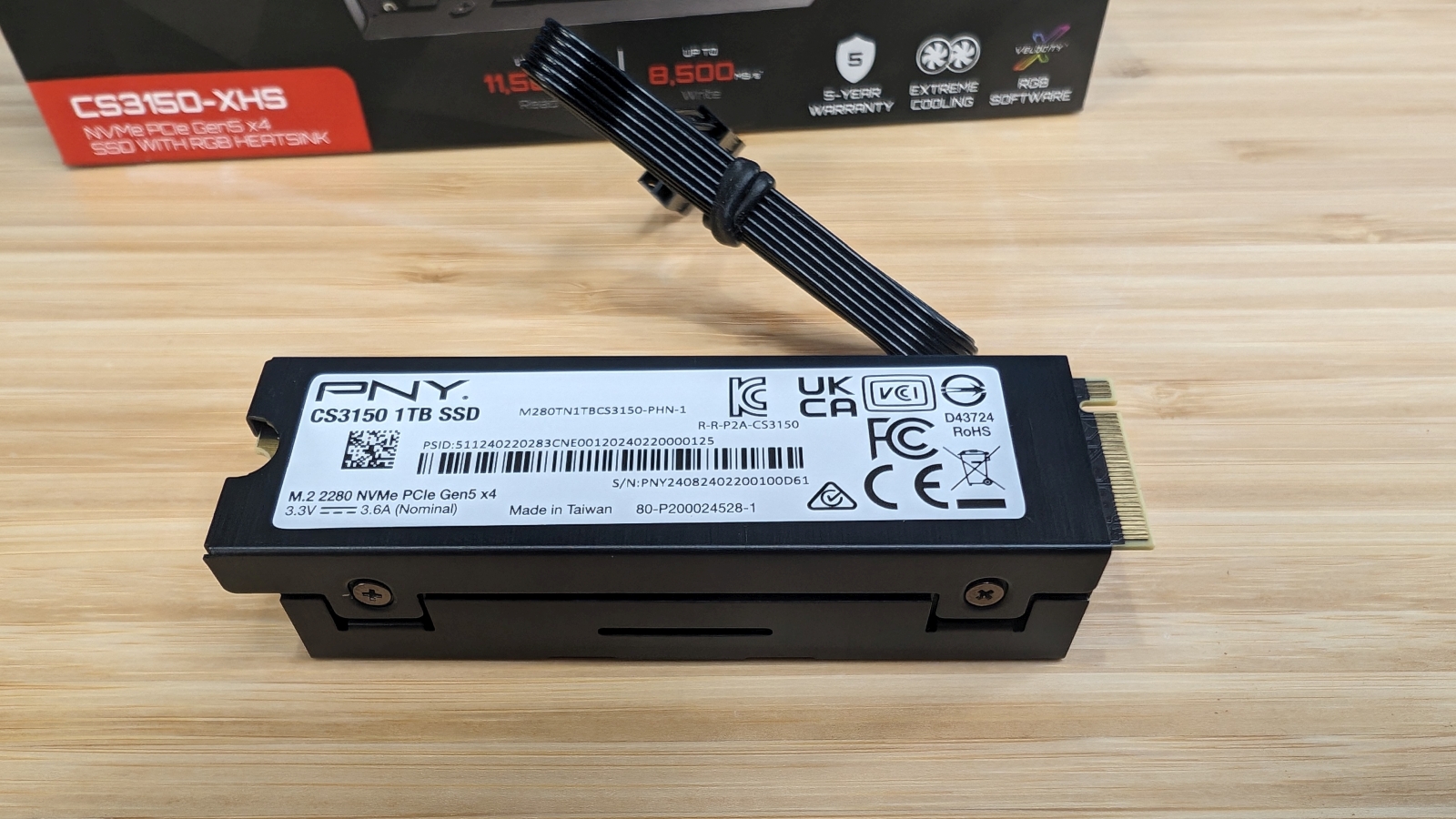
The warranty on both of these drives is 5 years. Normally manufacturers couple their warranty with a TBW maximum, or “Terabytes Written”. When SSDs were new, these TBW ratings were scary small, meaning the drive could potentially die before a 3 year warranty ended. Nowadays that’s becoming a thing of the past, with the TBW (if they even still use this measurement) being so high that you could potentially write continuously for a decade and not exceed it. In the case of the CS3150, PNY uses MTTF or “Mean Time to Failure” to measure the expected lifespan. The expected life of this drive is a MTTF of 1,600,000 hours, or roughly 182 years. PNY warranties the drive for the first 5 years of that 182, no questions asked.
PNY CS3150 PCIe Gen5 x4 NVMe
Phenominal
It’s rare to see a literal doubling of performance between generations, but that’s precisely what we have here. In both simulations and real-world scenarios, the PNY CS3150 is truly a next-generation storage solution.
Pros
- You get what you pay for, and then some!
- Real-world reduction in loading times
- Active cooling is very effective
- Exceeds rated speeds across all tests
- Excellent warranty
Cons
- Price premium at launch
